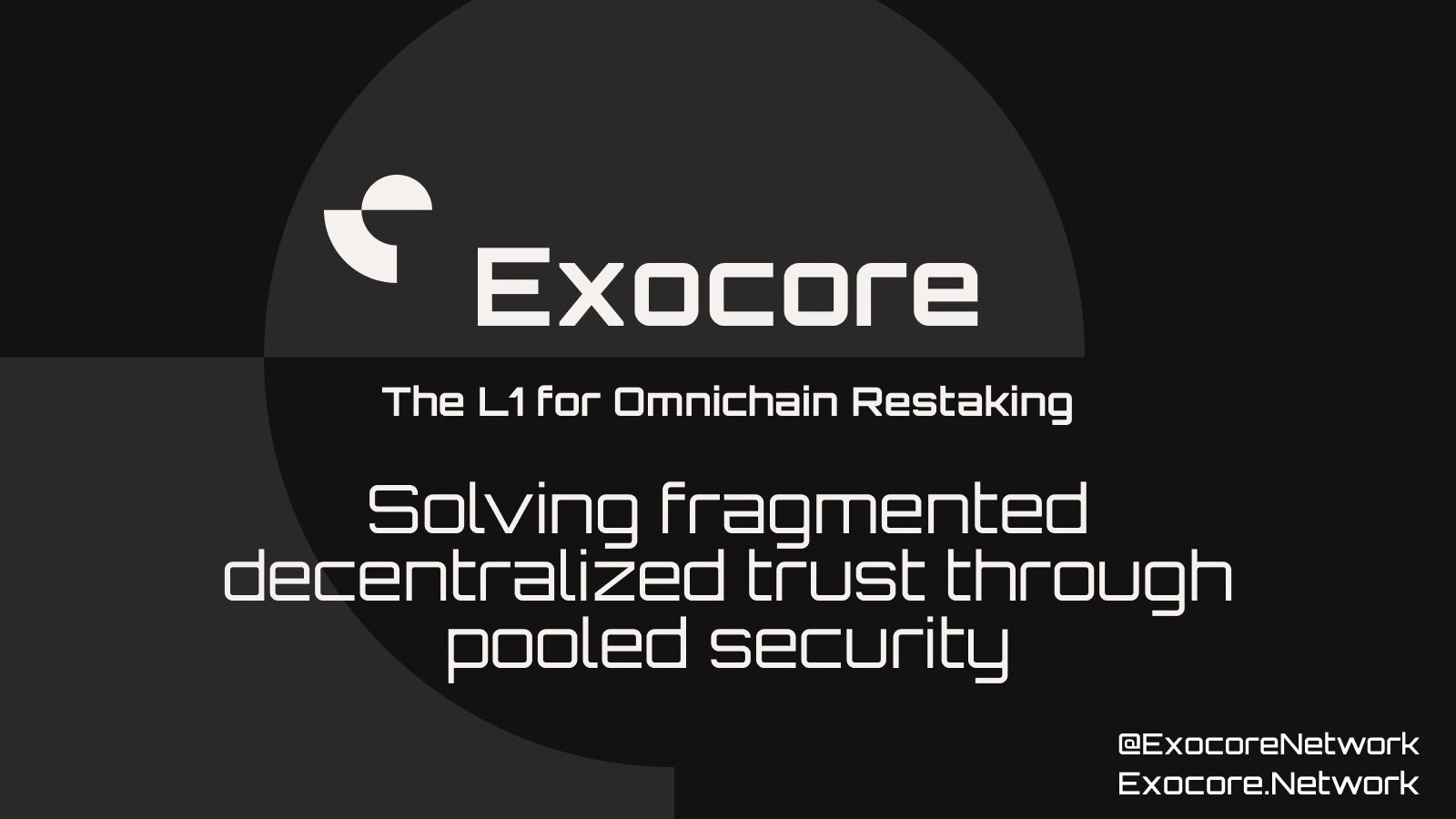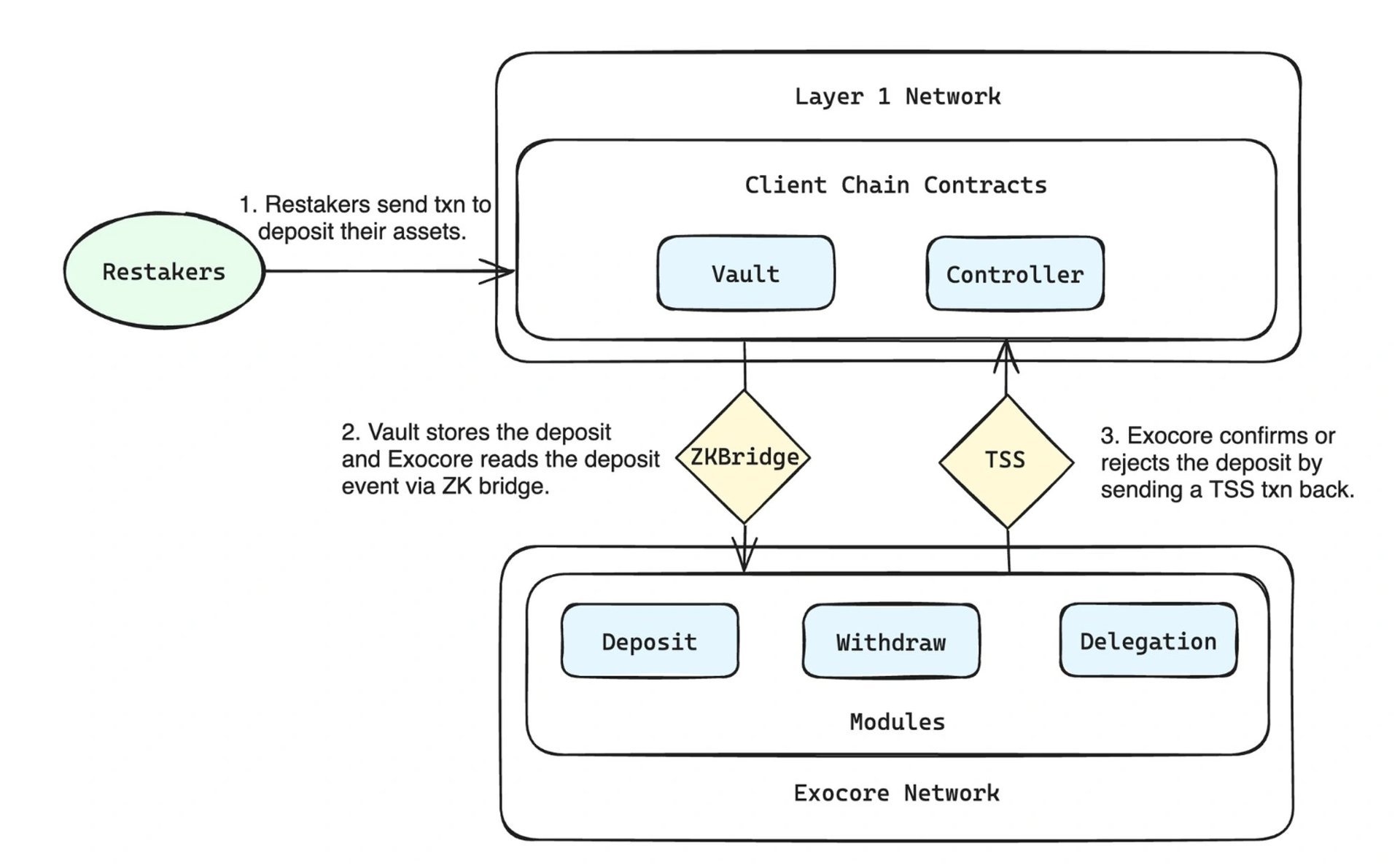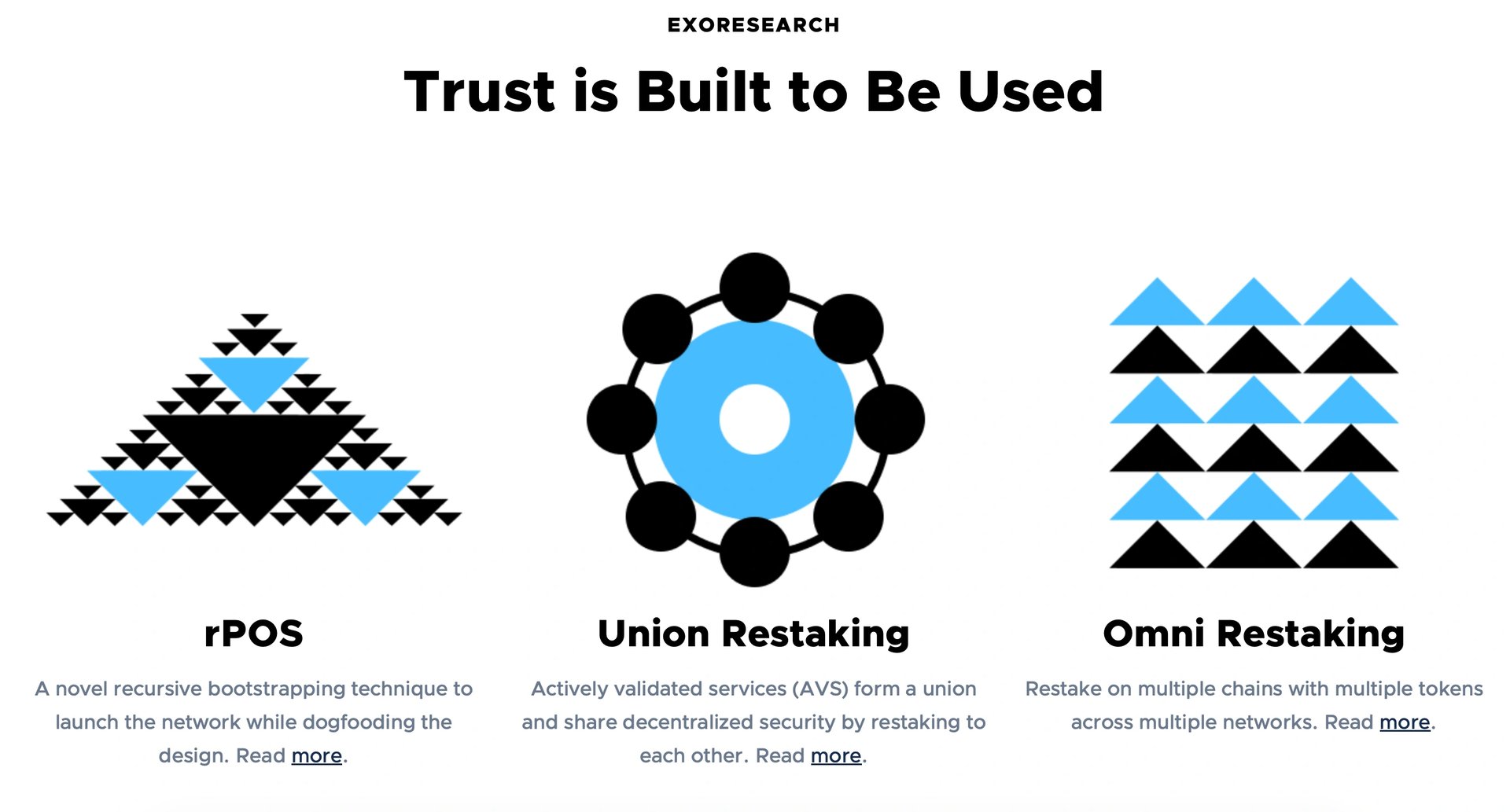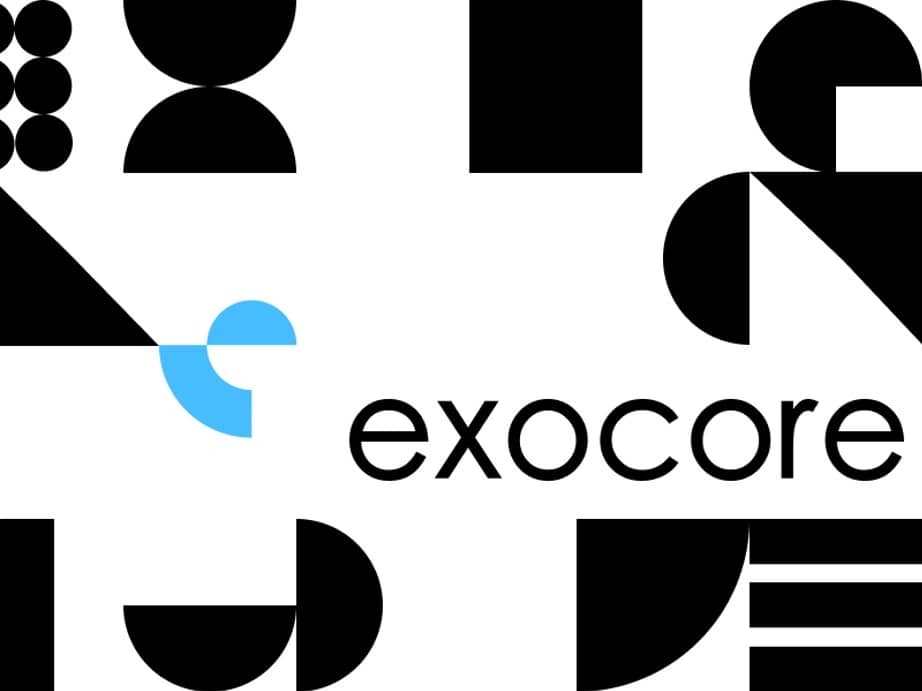Subscribe to wiki
Share wiki
Bookmark
Exocore
The Agent Tokenization Platform (ATP):Build autonomous agents with the Agent Development Kit (ADK)
Exocore
Exocore is the first layer-one omnichain restaking protocol, featuring a modular architecture with Tendermint-based Byzantine Fault Tolerant (BFT) consensus, Zero-Knowledge (ZK) light-client bridging, and a fully EVM-compatible execution environment intended to improve blockchain interoperability and security.[1][2]
Overview
Founded in 2023 by Warren Anderson, Raluca Popa, and RJ Lan, Exocore is the first layer-one omnichain restaking protocol. It incorporates a modular architecture with a Tendermint-based Byzantine Fault Tolerant (BFT) consensus mechanism, Zero-Knowledge (ZK) light-client bridging, and a fully EVM-compatible execution environment.
This design aims to facilitate efficient interactions for restakers, seamless integration for developers, and a decentralized governance framework supported by a Proof-of-Stake network of restaked validator operators. These operators can also run nodes for Actively Validated Services (AVS).
Exocore introduces the concept of Union Restaking, where off-chain services can form unions and aim to extend the crypto-economic security of their tokens to one another. By pooling and extending crypto-economic security to off-chain systems, Exocore seeks to support an open market for decentralized trust.[1][2][3][4]

Products
Exocore Restaking
Exocore facilitates the restaking of tokens to Actively Validated Services (AVSs), thereby extending decentralized security to off-chain services through a model known as "pooled security."
By utilizing restaked Proof-of-Stake (rPOS), Exocore can initialize its network with external tokens instead of relying solely on a native one. The protocol supports various assets, including Layer 1 and Layer 2 tokens, Liquid Staking Tokens, and stablecoins. Exocore connects with blockchains through a trustless bridging mechanism and employs Zero-Knowledge light clients for secure verification.
AVSs can integrate via smart contracts or native modules, with the latter requiring community governance approval. Additionally, Exocore introduces "union restaking," which allows AVSs to leverage cumulative stakes for improved security without incurring extra costs.[5]
Restaking Mechanism
The restaking mechanism of Exocore operates through rPOS, involving several essential steps. Client chain contracts are deployed on supported Layer 1 networks, followed by the registration of genesis validators within these contracts. Stakers pre-stake tokens with these validators, who then form the initial committee and establish their stakes.
As an omnichain platform, Exocore aims to support various token types for staking, including native tokens and liquid staking tokens. Each AVS specifies accepted tokens, which can influence operators' voting power decisions.
Voting power is calculated based on the actual value of restaked tokens, utilizing a price oracle that provides periodic valuations. Exocore also introduces union restaking, allowing AVSs to pool security among members, thereby enhancing network robustness without significantly increasing costs.[10]
Architecture
Network
The Exocore protocol consists of three components: the Exocore network, one-way state pegs (trustless ZK bridge), and client chain contracts. The Exocore network aims to coordinate interactions among restakers, operators, and Actively Validated Services (AVSs), while client chain contracts facilitate actions such as deposits and withdrawals.
This network manages the registration of operators and AVSs and communicates with client chains through trustless state pegs. Built on an EVM-compatible blockchain using Tendermint BFT consensus, Exocore seeks to support integration via native modules.
Instant finality aims to ensure reliable cross-chain communication, and the use of the Ethereum Virtual Machine (EVM) addresses various on-chain programming requirements.[6]

Modules
The Exocore network consists of several modules that implement the core restaking functions:
- Deposit and Withdrawal: Manages the deposit and withdrawal of staked tokens, verifying transactions and unlocking tokens as needed.
- Operator and AVS: Handles the registration and updates of operators and AVSs, maintaining accurate records.
- Delegation: Links delegated tokens to operators, validating requests and providing data for voting power calculations.
- Reward: Oversees reward distribution for operators and delegators, with templates for easy implementation.
- Slashing: Manages slashing rules and verifies malicious behavior, executing slashing actions as necessary.[7]
Client Chain Bridges
The client chain bridge facilitates communication between Exocore and client chains that host restakers' tokens. It supports reading the state of tokens and executing control actions, such as locking or slashing tokens, through signed transactions.
Exocore employs two verification methods: traditional light clients for SPV and ZK-based light clients for increased efficiency. Unique user accounts are established by combining chain ID and user address to prevent race conditions.
Messages include a nonce to ensure proper processing order. Failed messages are queued for retries, and Exocore aims to confirm actions like deposits by updating the client chain’s state.[8]
Client Chain Contracts
Client chain contracts are smart contracts deployed on Layer 1 and Layer 2 blockchains, managed by a Threshold Signature Scheme (TSS) account owned by Exocore validators. These contracts facilitate interactions for restakers within the Exocore system and aim to securely manage staked tokens by preventing unauthorized transfers.
Each client chain includes two primary contract types. The Vault Contract is responsible for handling deposits and withdrawals of staked tokens, while the Controller Contract governs the Vault's operations and enables communication with the Exocore network.[9]
Use Cases
Exocore facilitates various applications within the multi-chain ecosystem, aiming to enhance security and decentralization across different platforms. The following use cases outline the functionalities supported by Exocore's infrastructure:
- Bridges: Aims to improve security by allowing tokens and operators from connected chains to contribute to bridge stability, potentially leading to liquidity-based bridges.
- Oracles: Seeks to enhance the decentralization and security of oracle systems, reducing susceptibility to attacks and exploits in decentralized finance applications.
- App Chains: Allows app chains to borrow external tokens or engage in union restaking to achieve necessary security levels, while providing access to a network of node operators.
- RPC Networks: Promotes the development of decentralized RPC services by incentivizing honest behavior from node operators through token stakes, addressing trust issues in the application stack.
- Sequencers: Aims to mitigate centralization risks associated with Layer 2 sequencers by implementing robust incentives and penalties, fostering trustlessness and censorship resistance.
- Consensus Protocols: Provides an additional layer of crypto-economic security for new consensus designs, supporting innovation while managing associated risks.[11]

See something wrong?
The Agent Tokenization Platform (ATP):Build autonomous agents with the Agent Development Kit (ADK)
